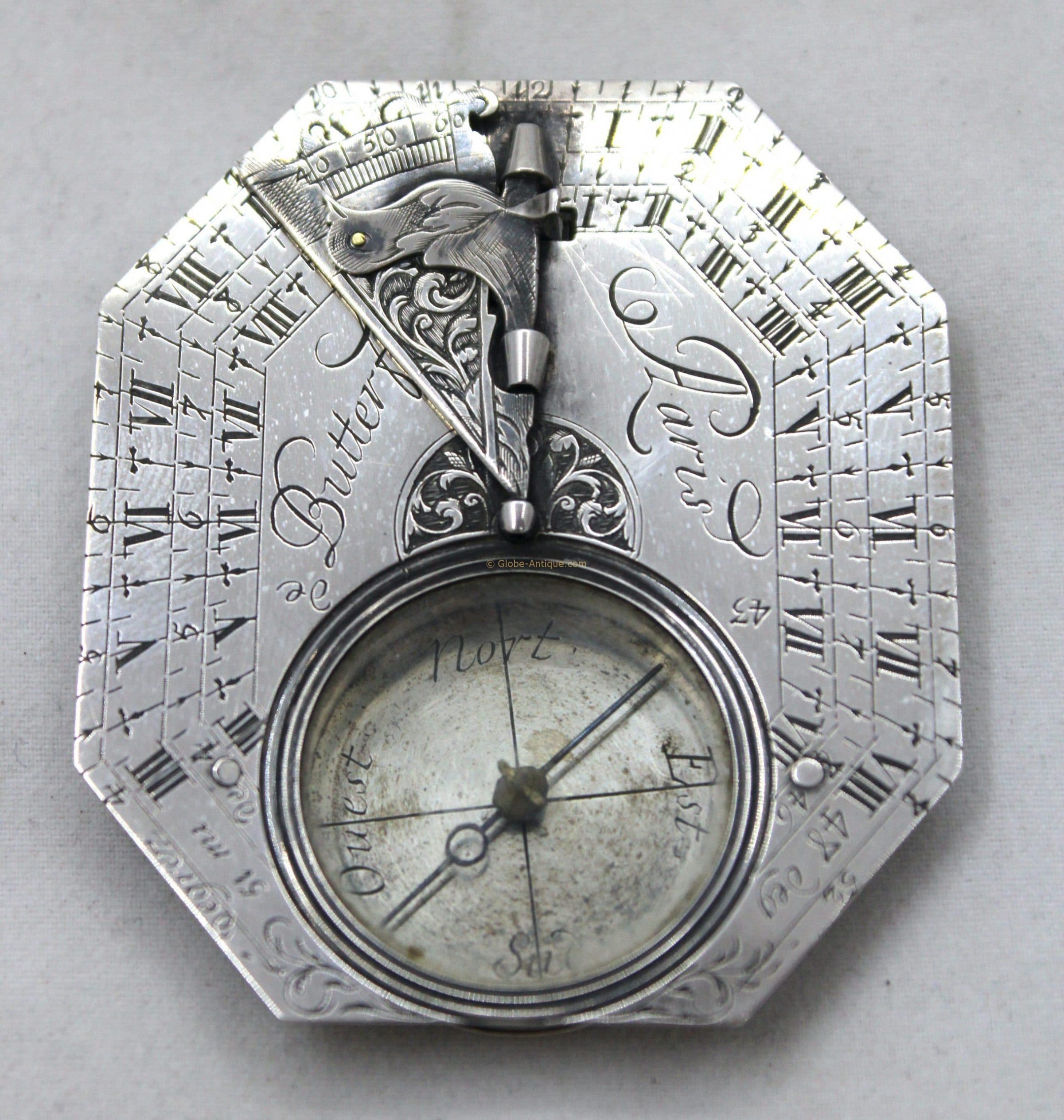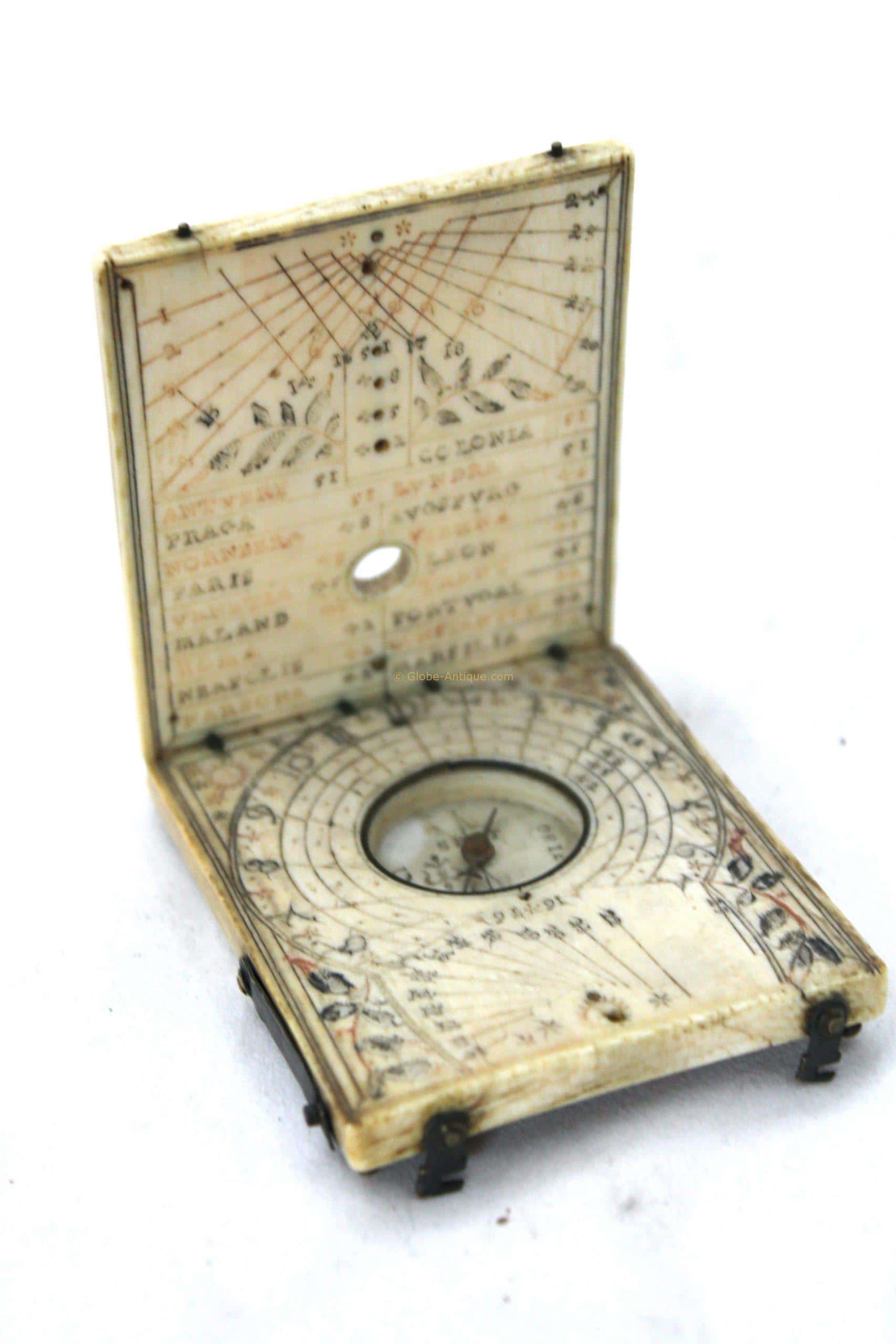Description
Butterfield silver horizontal sundial.
The sundial is graved with 20 European cities latitudes.
The folding gnomon is a bird with degrees of latitudes 40 to 60 Degrees.
A horizontal pocket sundial is a small, portable device that uses the position of the sun to tell the time.
Here are some indications of use for a horizontal pocket sundial:
Ensure that the sundial is exposed to direct sunlight. It won’t work in cloudy or shaded conditions because it relies on the sun’s position in the sky.
Place the sundial on a flat, level surface. This ensures accurate timekeeping because the sundial’s gnomon (the part that casts a shadow) needs to be parallel to the Earth’s axis.
Position the sundial so that the north-south line on the sundial (usually marked) is aligned with the true north-south direction. You can use a compass or a known landmark to determine this direction.
Read the time on the dial plate, which is marked with hours and sometimes minutes. The shadow cast by the gnomon will fall on these markings, indicating the time.
Michael Butterfield (1635–1724) was a British clockmaker who moved to Paris about 1663.
Butterfield worked at the royal court was appointed engineer to the King Louis XIV. He opened a shop selling precision instruments in 1677 in rue Neuve-des-Fossés, in Saint-Germain.
He sold all types of sundials, but dominated the market for the small travelling dial with the adjustable gnomonwith bird motif and three chapter rings.
In conclusion, This type of dial became fashionable and called the Butterfield dial. This type of Butterfield silver horizontal sundial dial was known before Butterfield manufactured them, for instance Roch Blondeau and Timothee Collet, and other instrument makers in Paris and beyond, continued to make them particularly after his death. Among his international clients was the Russian Czar Peter the Great who visited his shop in 1717 and ordered a great quantity of gilt copper dials.





